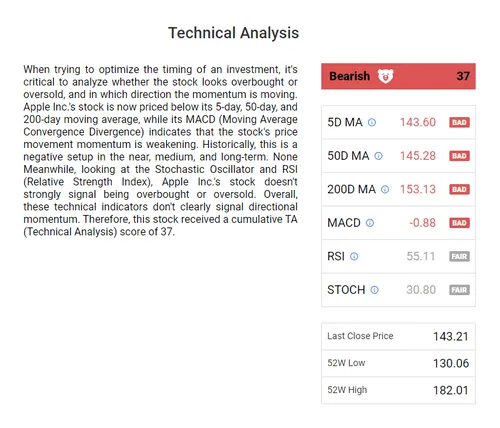20 Best Pieces Of Advice For Deciding On AI Stock Analysing Websites
20 Best Pieces Of Advice For Deciding On AI Stock Analysing Websites
Blog Article
Top 10 Things To Consider When Considering Ai And Machine Learning Models On Ai Stock Trading Platforms
It is important to assess the AI and Machine Learning (ML) models that are employed by stock and trading prediction systems. This will ensure that they provide precise, reliable and useful insights. Models that are poor-designed or exaggerated can result in inaccurate forecasts as well as financial loss. We have compiled our top 10 suggestions on how to evaluate AI/ML-based platforms.
1. Learn about the goal and methodology of this model
A clear objective: determine whether the model was created for short-term trading, longer-term investing, sentiment analysis or for risk management.
Algorithm transparency - Examine to determine if there are any information about the algorithm (e.g. decision trees or neural nets, reinforcement, etc.).
Customizability. Check if the model's parameters can be customized to suit your personal trading strategy.
2. Review the Model Performance Metrics
Accuracy. Find out the model's ability to forecast, but do not depend on it solely because it could be false.
Precision and recall (or accuracy) Assess the extent to which your model is able to differentiate between genuine positives - e.g. precisely predicted price changes as well as false positives.
Risk-adjusted return: Examine if the model's predictions yield profitable trades following taking into account the risk (e.g., Sharpe ratio, Sortino ratio).
3. Test the model with Backtesting
Backtesting the model by using previous data lets you evaluate its performance against previous market conditions.
Testing out-of-sample: Ensure that your model has been tested with data that it wasn't trained on to avoid overfitting.
Scenario analysis: Test the model's performance in different market conditions (e.g., bear markets, bull markets high volatility).
4. Check for Overfitting
Overfitting signals: Watch out for models that perform extraordinarily well with data training, but not so well on data unseen.
Regularization Techniques: Check to see if the platform employs techniques such as dropout or L1/L2 regularization to prevent overfitting.
Cross-validation (cross-validation) Verify that your platform uses cross-validation to evaluate the model's generalizability.
5. Examine Feature Engineering
Relevant Features: Check to determine if the model has meaningful characteristics. (e.g. volume, price, technical indicators as well as sentiment data).
Choose features: Ensure that the platform only selects statistically significant features and does not contain redundant or irrelevant data.
Dynamic feature updates: See whether the model adapts over time to new features or to changing market conditions.
6. Evaluate Model Explainability
Interpretability: Ensure that the model is clear in explaining its predictions (e.g., SHAP values, importance of features).
Black-box models can't be explained: Be wary of platforms that use complex models, such as deep neural networks.
User-friendly insights: Ensure that the platform offers actionable insights that are presented in a way that traders will understand.
7. Review the model Adaptability
Changes in the market - Make sure that the model is adapted to changing market conditions.
Check for continuous learning. The platform should be updated the model often with new data.
Feedback loops: Make sure your platform incorporates feedback from users or real-world results to improve the model.
8. Examine for Bias in the elections
Data bias: Verify that the data regarding training are accurate to the market and that they are not biased (e.g. overrepresentation in specific segments or time frames).
Model bias: Check whether the platform is actively monitoring the biases of the model's prediction and if it mitigates the effects of these biases.
Fairness: Ensure whether the model favors or defy certain stocks, trading styles or particular segments.
9. Assess Computational Effectiveness
Speed: See whether you are able to make predictions using the model in real-time.
Scalability Verify the platform's ability to handle large amounts of data and multiple users with no performance loss.
Resource usage: Examine to see if your model has been optimized to use efficient computing resources (e.g. GPU/TPU usage).
Review Transparency, Accountability, and Other Issues
Model documentation: Make sure that the platform offers detailed documentation regarding the model design, the process of training and its limitations.
Third-party audits : Check if your model was audited and validated independently by a third party.
Error handling: Check to see if your platform has mechanisms for detecting and correcting model mistakes.
Bonus Tips
User reviews and cases studies User feedback is a great way to get a better idea of how the model works in real-world situations.
Trial period: You can use the demo or trial version for free to check the model's predictions and the model's usability.
Customer Support: Make sure that the platform provides robust technical support or models-related assistance.
Following these tips can aid in evaluating the AI models and ML models available on stock prediction platforms. You'll be able to determine if they are transparent and reliable. They should also align with your goals for trading. See the top rated updated blog post on ai trading bots for blog tips including ai stock trader, best stock analysis app, trader ai intal, ai trading app, artificial intelligence stocks, best ai stocks to invest in, best ai stocks, best ai for trading, ai trader, ai stock trading app and more.
Top 10 Tips For Evaluating The Reputation & Reviews Of Ai-Powered Trading Platforms
For AI-driven platforms for trading and stock prediction It is essential to verify their reputation and reviews. This will help ensure that they are dependable as well as trustworthy and efficient. These are the top 10 tips to examine their reputation as well as reviews:
1. Check Independent Review Platforms
There are reviews available on reliable platforms like G2, copyright or Capterra.
Why: Independent platforms offer unbiased feedback by real users.
2. Study case studies and reviews
Utilize the platform's site to view user reviews, case studies and other details.
What's the reason? These insights give real-time feedback on performance and satisfaction of users.
3. Evaluate Expert Opinions and industry recognition
Tip. Check whether the platform is recommended or reviewed by experts in the industry and financial analysts, credible publications, or any other.
Expert endorsements lend credibility to claims made by the platform.
4. Social Media Sentiment
TIP: Go through social media sites for discussions and opinions about the platform (e.g. Twitter, LinkedIn, Reddit).
Why: Social media provides unverified opinions and information about the platform's reputation.
5. Verify compliance with the regulations.
Make sure your platform conforms with financial regulations, such as SEC and FINRA or the laws on data privacy, such as GDPR.
Why? Compliance is essential in order to make sure that the platform functions legally and ethically.
6. Transparency of Performance Metrics
Tips: Check if the platform offers transparent performance indicators (e.g. accuracy rates, ROI, backtesting results).
Transparency is important because it builds trust, and lets users assess the performance of the system.
7. Check the Quality of Customer Support
Check out the reviews for more details on customer service and its effectiveness.
To ensure a pleasant user-experience, it is important to provide reliable assistance.
8. Red Flags to Look for in Reviews
TIP: Look out for complaints that have been repeated. This could be due to poor performance, hidden charges or the inability to update.
Why? Consistently negative feedback may indicate problems with the platform.
9. Evaluation of Community and User Engagement
Tips: Check if the platform engages with users frequently and has a vibrant community.
Why? A solid community reflects the satisfaction of customers and continuous assistance.
10. Examine the track record of the company.
Tip: Investigate the history of the company, its management team, and previous performance in the area of financial technology.
The reason: A history of success increases confidence in the reliability of platforms and knowledge.
Compare multiple platforms
Compare the reputations and ratings of the various platforms to figure out which one is the most appropriate to your needs.
Following these tips can aid you in assessing the credibility of AI trading and stock prediction platforms. You'll be able to select the one that is reliable and efficient. Follow the recommended more help about ai trading tools for website advice including ai bots for trading, ai trading, ai stock trader, free ai trading bot, trading ai bot, ai trader, best copyright prediction site, ai bots for trading, investing in ai stocks, artificial intelligence stocks and more.